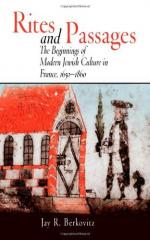|
This section contains 3,162 words (approx. 11 pages at 300 words per page) |

|
The publication of Mircea Eliade's Rites and Symbols of Initiation in 1958, the appearance in 1960 of an English translation of Arnold van Gennep's Les rites de passage, and Victor Turner's influential and widely read The Ritual Process: Structure and Anti-Structure, published in 1969, are the three pillars on which classical rites of passage theory was constructed. The generation of scholars following these three men has done the work of developing, adding to, applying, and critiquing their contributions. The work of Eliade, van Gennep, and Turner informed a surge of popular interest in North America and Europe—beginning in earnest in the 1980s—in passage rites. Their thinking on rites of passage has been disseminated to a wide audience through secondary texts, programs, institutes, and weekend workshops, and has helped cultivate an ethos of ritual experimentation around the "canonical" big four: rites of birth, initiation...
|
This section contains 3,162 words (approx. 11 pages at 300 words per page) |

|


![View Rites of Passage An Overview [first Edition]](https://d22o6al7s0pvzr.cloudfront.net/images/bookrags/aero300/content/btn_prev.png?1706062909)

